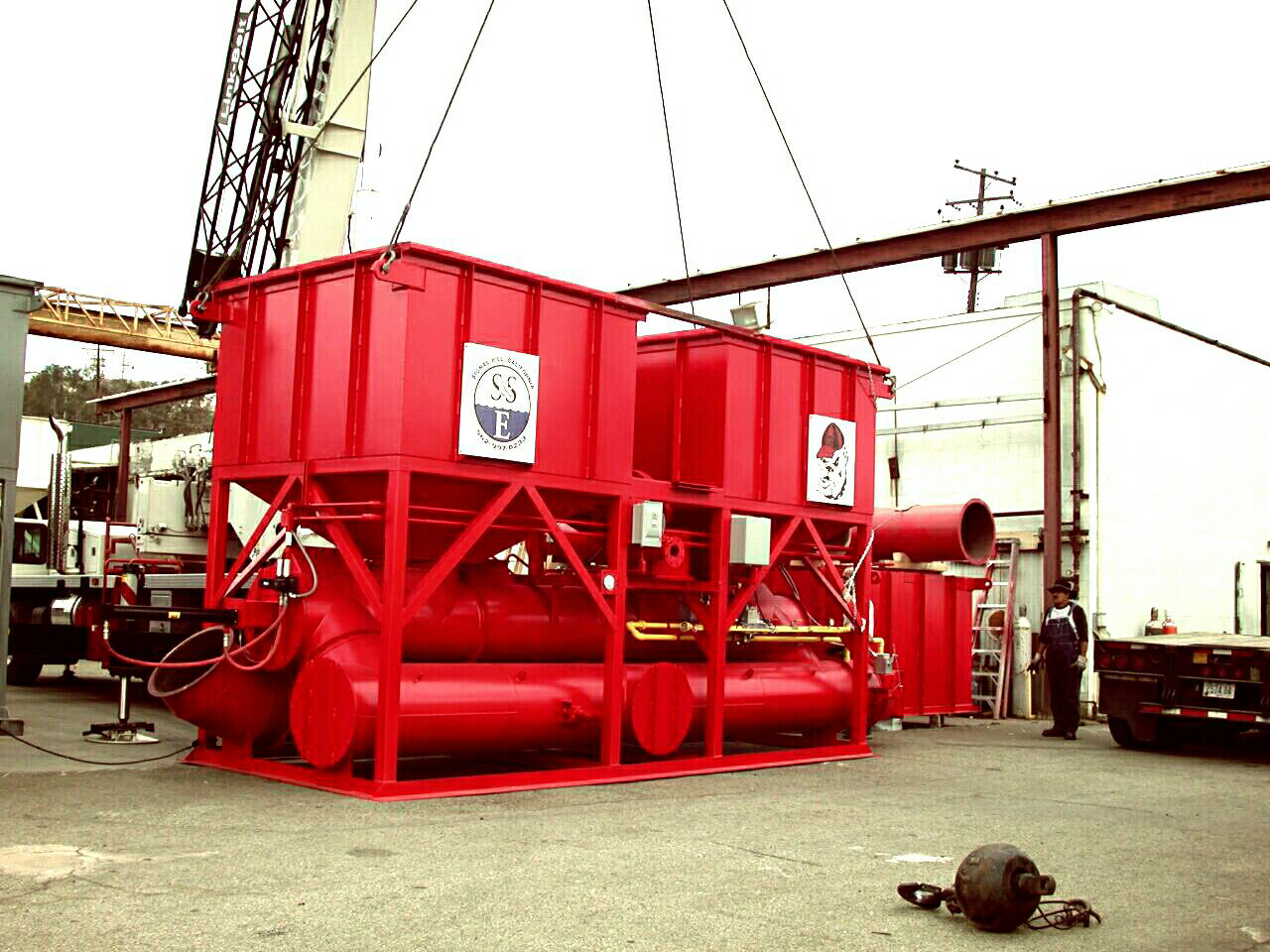
Recognizing Catalyst-Poisoning Symptoms Early: A Guide for Industry Pros
August 6, 2025 8:30 amThe Imperative of Recognizing Catalyst-Poisoning Symptoms Early: An Overview
Recognizing catalyst-poisoning symptoms early is crucial for maintaining the efficiency and longevity of industrial systems. As Ship & Shore Environmental, Inc., we understand that catalyst poisoning can lead to significant operational inefficiencies, increased costs, and potential regulatory non-compliance. By prioritizing the early detection and recognition of these symptoms, we can mitigate the risks and enhance overall system performance.
Understanding Catalyst Poisoning in Industrial Applications
Catalyst poisoning refers to the deactivation or reduction in the effectiveness of a catalyst due to contaminants or impurities within the system. Common poisons include sulfur, chlorine, and heavy metals that can bind to the active sites of catalysts, rendering them ineffective. In industrial settings, catalysts play a vital role in speeding up chemical reactions and improving process efficiency. Thus, understanding the mechanisms behind catalyst poisoning is essential for any industrial operation reliant on catalytic processes.
Real-life Implications of Delayed Identification of Catalyst Poisoning Signs
Delayed identification of catalyst poisoning symptoms can have far-reaching consequences. When catalyst poisoning is not detected in a timely manner, it can lead to increased energy consumption, lower throughput, and compromised product quality. In severe cases, it could even necessitate costly replacements of entire catalytic systems. Additionally, delayed identification might lead to non-compliance with regulatory standards, potentially resulting in legal repercussions and damage to the company’s reputation.
Key Indicators of Catalyst Poisoning: What to Look For
In industrial applications, recognizing catalyst-poisoning symptoms early is essential for maintaining optimal system performance. Typical indicators of catalyst poisoning include declining reaction rates, unexpected byproduct formation, and increased operating costs. Understanding these signs can help us take proactive measures to mitigate damage.
Firstly, a noticeable drop in reaction rates is a clear signal that catalyst materials are experiencing poisoning. This often results from contaminants blocking active sites on the catalyst surface. Consequently, our processes become less efficient, leading to potential delays in production timelines.
Second, the emergence of unanticipated byproducts can suggest catalyst poisoning. Contaminants often initiate unwanted side reactions that produce these byproducts. Therefore, monitoring product purity closely can aid us in identifying such deviations promptly.
Lastly, a spike in operating costs, particularly related to energy consumption or materials usage, can be indicative of compromised catalyst efficiency. When catalysts underperform, we might consume more resources to achieve desired production levels. Keeping tabs on our operational expenses can provide an early warning system for catalyst issues.
Case Study Analysis: Early Detection Versus Late Detection of Catalyst Poisoning
Analyzing real-life scenarios can offer valuable insights into our operations. In one case, early detection of catalyst poisoning allowed an industrial plant to address the issue promptly, minimizing downtime and costs. Here, vigilant monitoring systems played a crucial role in identifying symptoms like declining conversion rates and increased trace impurities.
On the contrary, another plant faced severe repercussions due to late detection. By the time they recognized the problem, extensive poisoning had degraded catalyst performance significantly. As a result, the plant required a complete catalyst replacement, incurring substantial downtime and financial losses.
These case studies underscore the importance of recognizing catalyst-poisoning symptoms early. Swift action can mitigate negative impacts, ensuring smoother operations and cost-effectiveness.
Prevention and System Monitoring Techniques
Preventing catalyst poisoning is not only about reacting to symptoms but also implementing robust strategies. Our proactive approach should include multiple layers of prevention and monitoring to safeguard catalyst longevity.
- Feedstock Purification: Ensuring that feedstock materials are free from contaminants is a fundamental step. Techniques like distillation, filtration, and adsorption can be employed to purify feed streams.
- Regular Catalyst Regeneration: Periodic regeneration helps restore catalyst activity by removing accumulated contaminants. Techniques vary based on catalyst type, including thermal treatment or chemical washing.
- Advanced Monitoring Systems: Leveraging real-time analytics can provide immediate insights into catalyst performance. Integrated sensors and online monitoring tools allow us to detect deviations and take corrective actions swiftly.
- Employee Training: Educating our team on the symptoms and prevention techniques of catalyst poisoning ensures heightened awareness. Knowledgeable personnel can identify issues earlier, preventing escalation.
Implementing these prevention and monitoring strategies not only extends catalyst life but also supports overall efficiency. By taking a holistic approach, we can mitigate risks associated with catalyst poisoning.
Did you know? Early detection of catalyst poisoning can save an industrial facility from costly downtime and ensure regulatory compliance.
The Role of Early Recognition of Catalyst-Poisoning Symptoms in Ensuring Regulatory Compliance
Timely identifying and addressing catalyst-poisoning symptoms is crucial for maintaining uninterrupted and efficient industrial processes. Recognizing catalyst-poisoning symptoms early not only prolongs the life of catalytic systems but also ensures adherence to stringent regulatory requirements. Regulations often necessitate specific performance standards, and any deviation due to poisoning can lead to non-compliance, heavy fines, and operational shutdowns. By staying proactive in detection and prevention, we not only safeguard our equipment but also align with environmental standards, protecting both our business and the environment.
Future Perspectives: Innovations in Catalyst Poisoning Detection and Prevention
The advent of new technologies is revolutionizing how we detect and mitigate catalyst poisoning. Enhanced analytical techniques, real-time monitoring systems, and predictive maintenance tools are becoming indispensable. Innovations such as advanced spectroscopy, sensor integration, and AI-driven predictive analysis enable us to foresee and address issues before they escalate. Embracing these advancements can significantly reduce downtime, operational costs, and environmental impact. As we move forward, investing in cutting-edge technologies and continuous learning will be pivotal in maintaining optimal industrial performance.
Final Insights: The Vitality of Knowledge in Catalyst Poisoning Symptoms Recognition
The significance of recognizing catalyst-poisoning symptoms early cannot be overstated. We have seen through numerous case studies that early detection makes a substantial difference in operational outcomes. Proactive identification and intervention can save substantial costs, improve efficiency, and uphold compliance. As industrial practitioners, staying informed and vigilant is our best defense against the detrimental effects of catalyst poisoning. Let’s commit to ongoing education, leveraging advanced technologies, and fostering a culture of proactive maintenance to ensure that our catalytic processes remain robust, efficient, and compliant.
FAQ
What are the common symptoms of catalyst poisoning that we should look for?
In industrial settings, our team should be vigilant for decreased catalyst activity, increased pressure drop across the catalyst bed, elevated operating temperatures, and unexpected changes in product yields or selectivity. These symptoms could indicate that the catalyst is not performing optimally due to contaminants.
Why is it crucial to detect signs of catalyst impairment promptly?
Early detection is key to maintaining not only the efficiency and longevity of our catalytic systems but also compliance with environmental regulations. Quick responses minimize downtime, reduce potential non-compliance fines, and prevent extensive damage to our equipment.
Can delayed identification of catalyst issues lead to regulatory non-compliance?
Absolutely, delayed action can result in the violation of emissions standards and other regulatory benchmarks. This can attract legal penalties and might necessitate costly operational halts, as well as tarnish our company’s reputation for environmental stewardship.
What technological advancements are aiding in the detection and prevention of catalyst problems?
Our industry benefits from innovations such as high-precision sensors, state-of-the-art spectroscopy, and AI-driven predictive analytics. These tools enhance our capability to anticipate and tackle catalyst issues before they escalate into major concerns.
How does maintaining a proactive stance on catalyst maintenance affect our operations?
Being proactive in this aspect means we are always one step ahead in preserving the optimal functioning of our catalytic systems. Consequently, this reduces repair costs, enhances operational efficiency, and sustains our commitment to adhering to environmental protocols.
Categorised in: Blog

